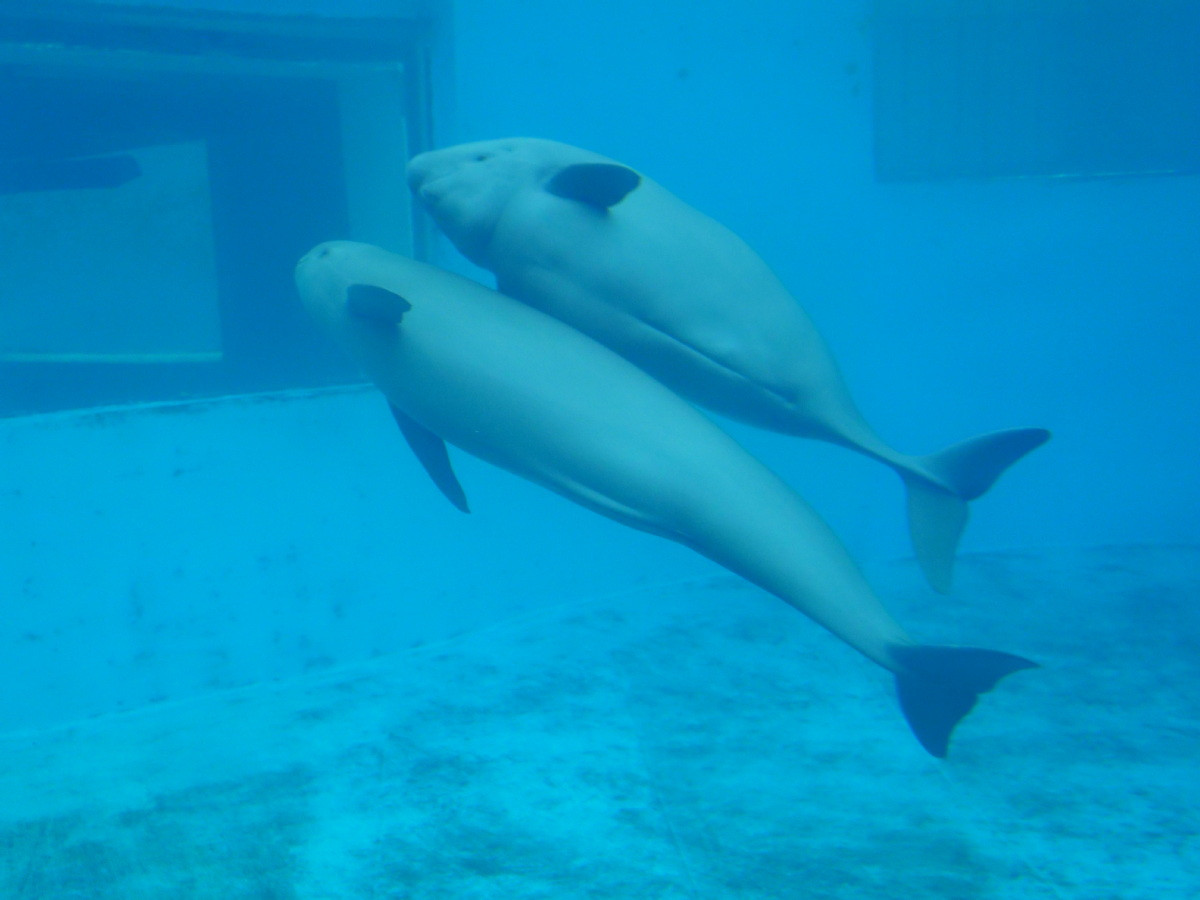
Newsroom
Success at Saving Finless Porpoises on Display

Tao Tao was the first Yangtze River finless porpoise to be born in captivity. Now her offspring, YYC, represents the second generation. [Photo by Zhang Rui/For chinadaily.com.cn]
Signs of success in a scientific effort to save rare Yangtze River finless porpoises were on display last week in an exhibition presented by the Chinese Academy of Sciences' Institute of Hydrobiology, in Wuhan, Hubei province.
Researchers from the institute first reported on their artificial breeding program and then conducted a flash mob at Jiangchen Paradise Walk, a large shopping mall in Wuhan, aiming to popularize scientific knowledge of Yangtze ecology and the porpoises — animals classified biologically with whales as cetaceans.
Hao Yujiang, an associate researcher at the institute, introduced a male calf surnamed YYC — said to be the offspring of Tao Tao, the first Yangtze finless porpoise to be born in captivity. The second-generation porpoise marks a breakthrough in the artificial breeding work of the mammal, Hao said.
Interactive activities — visual and audio games — attracted a crowd and taught about the animal. People took photos with the porpoises and compared their voice recordings with the sounds of the mammals. Children drew pictures depicting the Yangtze porpoises and showed them to the audience.
The finless porpoises are a barometer of the Yangtze River's ecological health. However, the population has slumped over the past decade. The animals are rarely seen in the Wuhan stretch of the river, researcher Wang Kexiong said.
After decades of effort, the protection and breeding of finless porpoises by the Institute has become one of the bench marks in the Wuhan government's work to improve the river ecology, said Hu Wei, deputy director of the hydrobiology institute.
The exhibition was the grand finale of the inaugural Finless Porpoise Care Month, which was launched on June 5 by the institute, Wuhan Baiji Conservation Foundation and local authorities.
In November, the local government introduced environmental improvements to help build up a better environment to support the finless porpoises. In coordination with those moves, the Institute of Hydrobiology organized four activities to popularize scientific knowledge of porpoise protection and raise awareness of the importance of protecting both the porpoises and the river during the month.
Under the guidance of the Yangtze River Basin Fishery Administration of the agricultural bureau, scientific institutes have made progress in feeding and breeding the mammals in captivity. The result enhances people's understanding of the biological characteristics and life habits of the porpoises and provides technical support for their natural conservation.